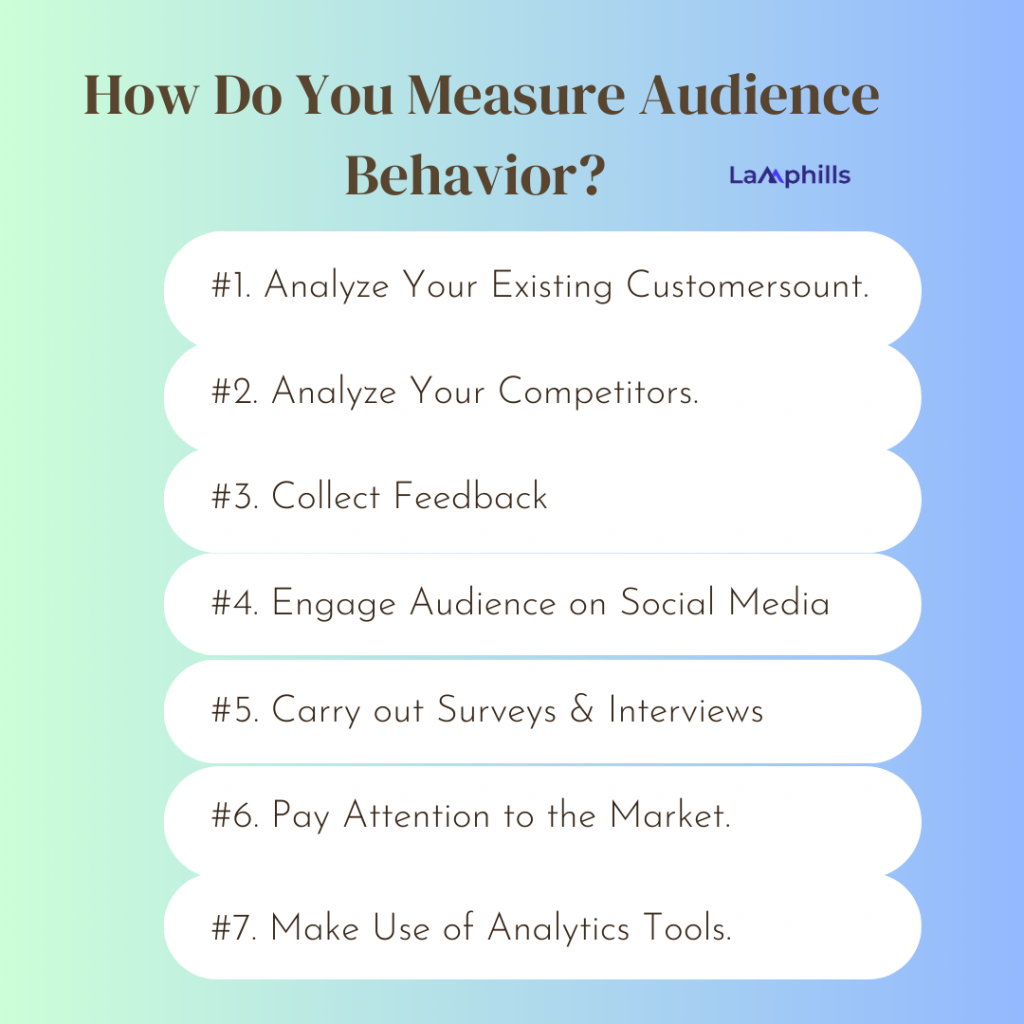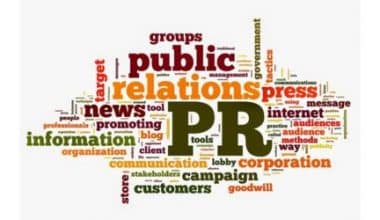When it comes to understanding your target audience and their preferences, behavior is a critical factor. Businesses may make well-informed decisions and customize their strategies to effectively interact and connect with their customers by analyzing the behavior of their audience.
Studying audience behavior can give business owners important insights into the additions and enhancements that customers want. Businesses may provide goods that satisfy customers’ requirements and expectations by learning about their preferences, which will eventually increase customer loyalty and retention.
In this article, you will learn what audience behavior is, its importance, and how to measure target audience behavior.
Key Points:
- Understanding how to measure the behavior of your target audience is essential to the success of your business because it can assist you in:
- Developing more persuasive marketing strategies and connecting with your target market.
- Increasing client loyalty and satisfaction by providing individualized experiences.
- Developing credibility and trust with your audience will raise brand awareness and reputation.
- By determining your audience’s wants and pain spots, you can optimize your product development and innovation.
- Setting yourself apart from other companies operating in your industry.
What Is Audience Behavior?
Audience behavior is the interaction between your brand, goods, services, and content and your current and potential customers. It encompasses their feelings, attitudes, and behaviors.
Overall, you must gather and examine data from a variety of sources, including your website, social media accounts, email correspondence, surveys, and user comments, to comprehend and impact audience behavior.
Why is it important to Measure Audience Behavior?
Let’s now explore in greater detail the significance of audience behavior:
#1. It helps in Customer or Audience Segmentation:
By examining audience behavior, businesses can divide their target market into segments according to demographics, interests, and purchasing patterns. Because of this segmentation, targeted marketing techniques that address particular audience categories may be implemented, leading to more efficient communication and engagement.
#2. Decision-Making Process:
By observing audience behavior, businesses can learn more about the elements that affect consumer decision-making, such as price sensitivity, brand loyalty, and social proof. This information can be used to create convincing marketing campaigns and messaging that align with the target audience’s decision-making process.
#3. It helps in User Experience Optimization:
Audience behavior analysis can offer insightful information about how a product or service is used. Businesses can pinpoint usability problems, pain points, and areas for improvement by monitoring user interactions. By optimizing the user experience with this data, customer satisfaction and retention will increase.
#4. It helps in evaluating Viewer Engagement
Understanding your audience’s viewing habits allows you to identify the length of a video, the most captivating portions, and the points at which viewers lose interest. By using this data, platforms can maintain audience attention and make enhancements.
#5. It helps Measure Ad Effectiveness
The assessment of advertising campaigns’ efficacy is contingent upon audience measurement for ad-supported apps and video streaming services. To evaluate their impact, you can monitor data such as conversion rates, click-through rates, and ad completion rates. Businesses can make more by more effective targeting and ad placements made possible by accurate data on viewer activity.
#6. Content Personalization:
Businesses may produce content that speaks to their target audience by analyzing audience behavior. Examples of this include tailored web experiences, targeted email campaigns, and personalized suggestions. Personalized content improves user engagement and forges closer bonds with clients.
#7. It offers a Competitive Advantage.
Your business can gain a superior advantage in a fiercely competitive environment through precise, detailed, real-time audience data. Superior user experiences increase the likelihood that a platform will draw and keep users.
As an example, let’s look at how important audience behavior is. Consider a shoe company wishing to introduce a fresh line. They find that their target audience is interested in shoes for the winter season by examining viewer behavior. Equipped with this understanding, the company can create a line of anti-slip shoes that last well during the winter to reflect the ideals of its target market. By catering to the tastes of the target demographic, the business builds a devoted following of patrons.
How Do You Measure Audience Behavior?
Now let’s look at how small businesses can measure and analyze audience behavior:

#1. Analyze Your Existing Customers
Your current customer base is the ideal place to start when gathering information about your target audience. Gather the trends that are currently at your disposal, such as the day and season that people buy, what they prefer to buy, the normal shopping lifecycles of your clients, and so on, before you begin assembling more detailed data through surveys and interviews.
#2. Analyze Your Competitors.
Find out who your rivals are, and then gather as much information as you can. You can easily find out more about them by visiting their websites and social media pages.
You can use tools like Semrush to research keyword competition and carry out a more thorough investigation. Additionally, you can find out the current worth or clientele of a rival through a competitive study.
Read Also: Online Brand Monitoring, Everything You Need to Know.
#3. Collect Feedback
It is now necessary to set up some fundamental systems for gathering client feedback. A nice place to start is using your website’s contact form. Note that an email campaign might be a useful tool for soliciting customer feedback.
DOWNLOAD OUr Customer Feedback Form Template:
Customer Feedback Analysis Template
#4. Engage with the Audience on Social Media
Find out what social media platforms your audience prefers to hang out with, and spend some time with them there to learn more about what they have to say, develop a sense of community, and win their trust and loyalty. Create or join groups on these platforms to expand your customer base even further.
Note that platforms like LinkedIn, Facebook, Instagram, YouTube, and other websites allow you to track mentions, offer targeted ads, and keep an eye on other useful metrics.
Read Also: Top 51 Social Listening Agencies & All You Need
#5. Carry out Surveys & Interviews
Surveys and interviews are efficient methods for getting insightful comments and an opportunity to ask the questions you need answered directly. Numerous tools, such as Google Forms and many more, can be used to conduct surveys.
Read Also: ONLINE SURVEY TOOLS: 10+ Best Online Survey Tools
#6. Pay Attention to the Market.
A tried-and-true method for gaining the necessary insights on consumer behavior and trends is to often visit or watch industry websites, blogs, and forums. Speaking with more understanding comes from staying up-to-date on the situation of the business or your specialty. Additionally, based on the information you gather, you can develop new markets.
Read Also: 12+ Social Listening Platforms to Enhance Your Brand Monitoring Strategies
#7. Make Use of Analytics Tools.
Businesses can analyze a wide range of indicators related to online customer activity by using platforms like Google Analytics that manage and track ad sales. To obtain even more information, a plethora of other sales and marketing tools can apply analytics to social media and email marketing efforts.
Read Also: Understanding The Importance of Analytics in the Success of Your Business
What Is A Target Audience?
A target audience is the target market for the goods or services you offer. Very few businesses will ever have “everyone” as their target market; in many cases, aiming to sell to everyone will lead to selling to nobody. Rather, those who stand to gain the most from your items will comprise your target audience.
What Are The Four Types Of Target Audiences?
Marketing experts categorize target audiences or consumers, into four main groups:
#1. Demographic target audiences:
These categorize your target audience into groups based on their age, gender, income, occupation, and educational attainment.
#2. Geographic target audiences:
A marketing tactic called geographic segmentation is used to target customers who reside in or frequent a specific area with goods or services. It operates under the premise that locals share the same requirements, preferences, and cultural considerations.
#3. Psychographic target audiences:
This section takes values, interests, attitudes, and lifestyles into account in addition to the fundamentals of demographics.
#4. Behavioral target audiences:
With behavioral targeting, marketers may concentrate on the unique behaviors and interests of individual users rather than just large groups. You may precisely personalize your marketing messages by analyzing a user’s online behavior, including their search queries, browsing history, and interactions with your app or website.
Read Also: TARGET CUSTOMER SERVICE: Understanding Your Target Audience in 2023
Examples of Big Brands that Measure and Understand their Target Audience Behavior
In this section, I will examine case studies from various markets and specializations, examining how the practitioners incorporated audience behavior principles into their approaches. I’ll also talk about the lessons learned and how you may use them for your own business. These examples are as follows:
#1. Netflix uses surveys to create a hit show.
Netflix is popular for using data to inform both the creation and dissemination of its content. The development of House of Cards, Netflix’s first original series, is among the most prominent instances of this. Netflix created shows that aligned with its audience’s expectations and interests by using statistics and surveys to determine their preferences and behaviors. In addition to asking its audience about their favorite actors, directors, and themes, Netflix also examined its audience’s viewing habits and content ratings.
#2. Target uses social media to segment its audience.
Target distinguishes its contents according to social media networks. For instance, their X (Twitter) account has an informal, friendly, tone that is mostly intended for a younger generation of millennials. This is a result of the younger demographic of Twitter users.
However, its Facebook account carries a more family-oriented tone. This is because families are the main audience for its Facebook advertisements.
Note that Target identified their target markets and made use of the disparities in how they are portrayed to their benefit.
#3. Apple Music is ad-free on social media.
The streaming service brags about having no advertisements on Twitter, which is probably going to turn off potential customers from other streaming services that don’t provide the same advantages. They share playlists and other material that can only be accessed by going to the website.
#4. Fortnite follows the anime trend.
The firm that created Fortnite, Epic Games, discovered that a large portion of its player base was interested in anime. In light of this, it’s not surprising that Fortnite chose to collaborate with the anime series Dragon Ball Z to add DBZ-related skins and characters to the game.
#5. Airbnb uses personalization to increase brand loyalty.
Airbnb is a website that links vacationers with hosts who are willing to rent out their houses. It increased trust and bookings by using personalization. Airbnb employed multiple strategies, including:
- Offering user reviews and social evidence, which aided in boosting confidence and lowering doubt.
- Providing assurances and insurance coverage to lower danger and boost security.
- Speaking in a warm, humane tone to build rapport and empathy.
- Making tailored suggestions and recommendations to create value and relevance.
- Using incentives and gamification to foster motivation and involvement.
- Making use of urgency and scarcity to compel demand and action.
By utilizing these strategies, Airbnb was able to develop a devoted and content customer base and see rapid company growth.
Overall, the purpose of target audiences is to draw in customers and provide useful guidance on how to promote them. The audience segmentation used by Target may work for your brand if it caters to a variety of target populations. Even if your audience is small, you can still gain insight from learning as much as you can about them.
What is the Difference Between Target Market and Target Audience?
A target market is a particular client group that a company’s products are intended for. A target audience uses audience demographics, interests, and purchasing patterns to define that group.
Related Articles:
7 Brand Storytelling Techniques That Captivate Audiences
What Is Consumer Public Relations?: Key Strategies for Connecting with Your Audience
7 Unbelievable Audience Behavior Hacks That Will Skyrocket Your Conversions Overnight






